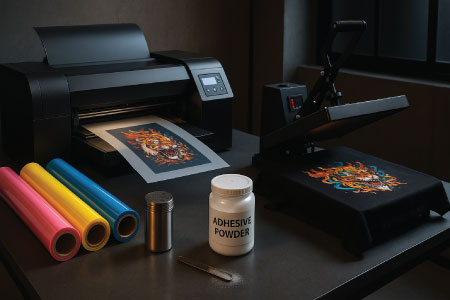How to make my DTF transfer good?
In 2025, Direct-to-Film (DTF) printing continues to dominate the custom apparel industry, offering vibrant colors, excellent durability, and flexibility for printing on various fabrics. While beginners may rely on standard workflows, professional printers who want to stand out need to master advanced DTF transfer techniques that deliver higher quality, faster production times, and expanded design capabilities.
This guide will take you deep into the advanced methods, pro tips, troubleshooting strategies, and productivity hacks that experienced printers can use to elevate their DTF printing game. Whether you’re producing custom t-shirts, hoodies, tote bags, or promotional items, these techniques will help you achieve premium results and maximize profitability.
Understanding the Science Behind DTF Transfers
Before diving into advanced methods, it’s important to understand why DTF works so well.
Core DTF Process Overview:
- Design Creation – Use high-resolution vector or raster graphics in CMYK+White color profiles.
- Printing on PET Film – Specialized printers print a reverse design layer with white ink backing.
- Powder Adhesive Application – Hot melt powder is applied to the printed image for adhesion.
- Curing – The adhesive is melted using a heat press or curing oven.
- Transfer to Fabric – Design is heat pressed onto the garment.
- Cold Peel or Hot Peel – Depending on film type, peel to reveal the final design.
The key to mastering DTF lies in understanding the interplay between ink density, adhesive quality, curing temperature, and peel technique.
Choosing the Right PET Film for Advanced Printing
Not all PET films are created equal. For professional DTF printing, film choice is critical for achieving sharp, vibrant results.
Types of PET Film:
- Cold Peel Film – Allows better ink bonding and sharper details but requires cooling before peeling.
- Hot Peel Film – Faster production but slightly less detailed than cold peel.
- Hybrid Peel Film – Offers flexibility to peel hot or cold.
- Matte vs. Glossy Film – Matte reduces glare for a premium finish, glossy enhances vibrancy.
Pro Tip: For high-end fashion apparel, matte cold peel films produce a luxury, soft-hand feel that boosts perceived garment value.
Advanced Color Management for DTF
One of the main advantages of DTF is its color vibrancy, but professionals know that getting the perfect color requires more than hitting “print.”
Color Management Steps:
- ICC Profiling – Use printer-specific ICC profiles for accurate color reproduction.
- White Ink Underbase Optimization – Adjust opacity for lighter fabrics to save ink and avoid stiffness.
- Spot Color Enhancement – Use RIP software features to boost key brand colors.
- Consistent Lighting for Color Checks – Always evaluate prints under daylight-balanced lighting.
Pro Tip: Test prints on scrap film before large production runs to avoid costly mistakes with brand-critical colors.
Perfecting the Adhesive Powder Application
Adhesive powder is what makes DTF designs stick and last through 50+ washes.
Advanced Powder Application Methods:
- Uniform Coating – Ensure even coverage; clumps create hard spots.
- Vibrating Powder Shaker – Improves powder distribution and speeds up workflow.
- Powder Particle Size Selection – Fine powders for detailed designs, medium for standard prints.
Common Mistake to Avoid: Applying too much adhesive results in a rubbery, thick print that cracks over time.
Curing Temperature and Time Adjustments
Proper curing ensures the adhesive fully bonds without scorching or discoloring the film.
Advanced Curing Tips:
- Use a DTF-specific oven for consistency.
- For delicate fabrics, slightly lower curing temperatures and increase dwell time.
- Regularly check oven calibration with a laser thermometer.
Fabric-Specific DTF Transfer Techniques
Cotton – Excellent ink absorption; maintain standard curing.
Polyester – Use a lower temperature to prevent dye migration (ghosting).
Nylon – Requires a special DTF adhesion promoter for better bonding.
Blends – Test before production; polyester blends may require bleed blockers.
Pro Tip: Always pre-press fabrics to remove moisture for a stronger bond.
Layering and Multi-Panel DTF Designs
Large prints often require multiple transfers.
Steps for Perfect Alignment:
- Use registration marks in your design.
- Apply center-out pressing to avoid wrinkles.
- Slightly overlap transfers for a seamless look.
Achieving a Soft-Hand Feel in DTF Prints
Many clients love bold designs but want a soft, breathable finish.
Soft-Hand Hacks:
- Reduce white underbase where not necessary.
- Use fine adhesive powder for less texture.
- Cure slightly longer at lower heat for smoother finishes.
Special Effects with DTF
DTF is not limited to flat, glossy prints. Advanced printers are experimenting with textures and effects:
- Foil Overlays – Heat press foil onto cured DTF prints for metallic shine.
- Glitter Adhesive Powders – Add sparkle directly into the adhesive layer.
- Puff DTF – Using puff additives in the ink for raised designs.
Troubleshooting Common DTF Issues
| Problem | Possible Cause | Solution |
| Ink Smudging | Excessive humidity | Store films in dry environment |
| Poor Adhesion | Inadequate powder coverage | Recoat evenly and cure properly |
| Cracking Prints | Too much adhesive or overcuring | Adjust powder and temp |
| Faded Colors | Wrong ICC profile or printer settings | Recalibrate color profiles |
Scaling Up for Professional Production
When moving from small-scale to industrial production:
- Invest in automated powder shakers and curing units.
- Standardize all press and print settings for consistency.
- Create a quality control checklist for every batch.
Maximizing DTF Printer Longevity
Professional printers know downtime equals lost revenue. Maintain equipment with:
- Daily head cleanings
- Weekly nozzle checks
- Monthly deep cleans
- Proper humidity control in print environment
Marketing Advanced DTF Capabilities
Your skill means nothing if customers don’t know you have it. Promote:
- Before-and-after samples showing print quality improvements.
- Social media videos demonstrating advanced effects.
- Custom apparel showcases for fashion brands.
Staying Ahead of Industry Trends
In 2025, expect DTF to expand with:
- Eco-friendly inks and films
- Hybrid printing (DTF + DTG)
- Bigger format DTF printers for banners and signage
Mastering advanced DTF transfer techniques is the difference between being just another print shop and becoming a go-to provider for premium apparel. From precise color management and fabric-specific adjustments to innovative effects and efficient scaling, the details covered here will help professional printers push their production quality to new heights.
By investing in skill, technology, and consistency, your business will stand out in a crowded custom printing market—and with the right marketing, those high-quality prints will keep customers coming back year after year.

